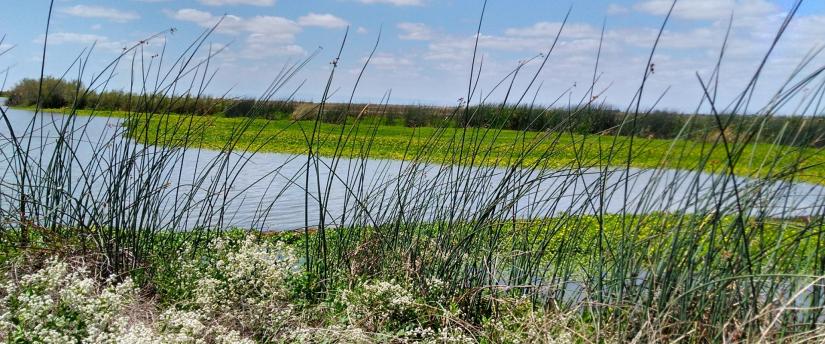
Delta Science Fellowship 2020
Fellow: Stefanie Helmrich, PhD Student, UC Merced
Research mentor: Peggy O’Day, University of California, Merced
Community mentors: Charles Alpers, USGS California Water Science Center
Why this research matters
Mercury pollution in the San Francisco Bay-Delta is deep- rooted, dating back to the California Gold Rush. Elevated levels of methylmercury—a dangerous form of the chemical that gets concentrated as it moves up the food web—have been seen in fish and birds, including sport fish. To protect wildlife and human health, resource managers need to understand the biogeochemical pathways that mercury undergoes in the environment, and how environmental conditions influence the formation of methylmercury.
Project
Results
Methylation and demethylation rates in the environment depend on a number of factors, making it difficult to interpret field and laboratory data. This project assessed over 40 published studies on methylation and demethylation rates, applying them to the reaction model to assess uncertainties and the relative importance of processes. The analysis found that demethylation rates had more uncertainties than methylation rates and that simulated MeHg concentrations were more sensitive to demethylation than methylation rates. Simulations also highlighted the influence of major elements including sulfur and iron on methylmercury production. Previous research believed that less methylmercury is produced when more sulfide is present, because it makes mercury unavailable to form the more toxic methylmercury. The simulations showed that the opposite is true: more sulfide makes mercury more available and can lead to increased methylmercury production.
Management Applications
In order to reduce methylmercury in delta freshwater environments, a working understanding of
biogeochemical processes affecting net methylmercury production is necessary. The model developed
through this project can supply basic knowledge that is necessary to plan management practices.
Findings showed surprising control mechanisms and buffering effects that are difficult to glean from
laboratory and field data.
Additionally, insights from this project on uncertainties and limitations of currently available data for
mercury methylation and methylmercury demethylation rates point to future areas of research that are
of interest for management. This research was presented to USGS and they are interested to apply the
model to field data.
